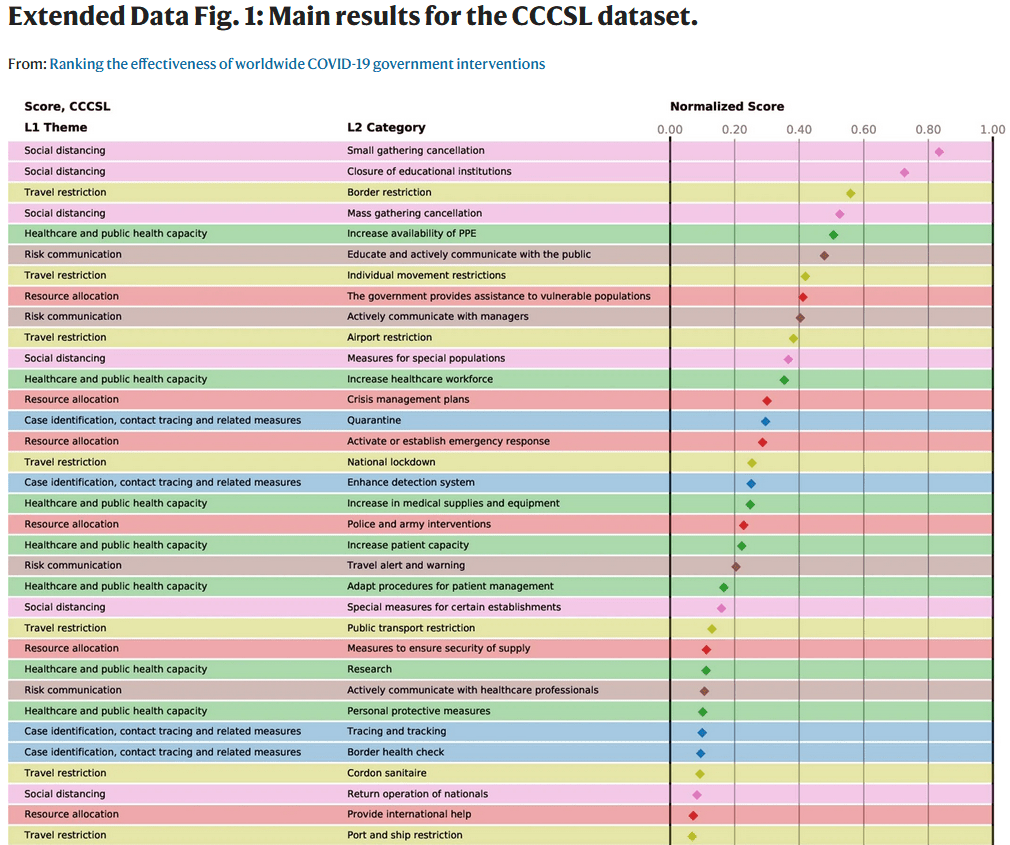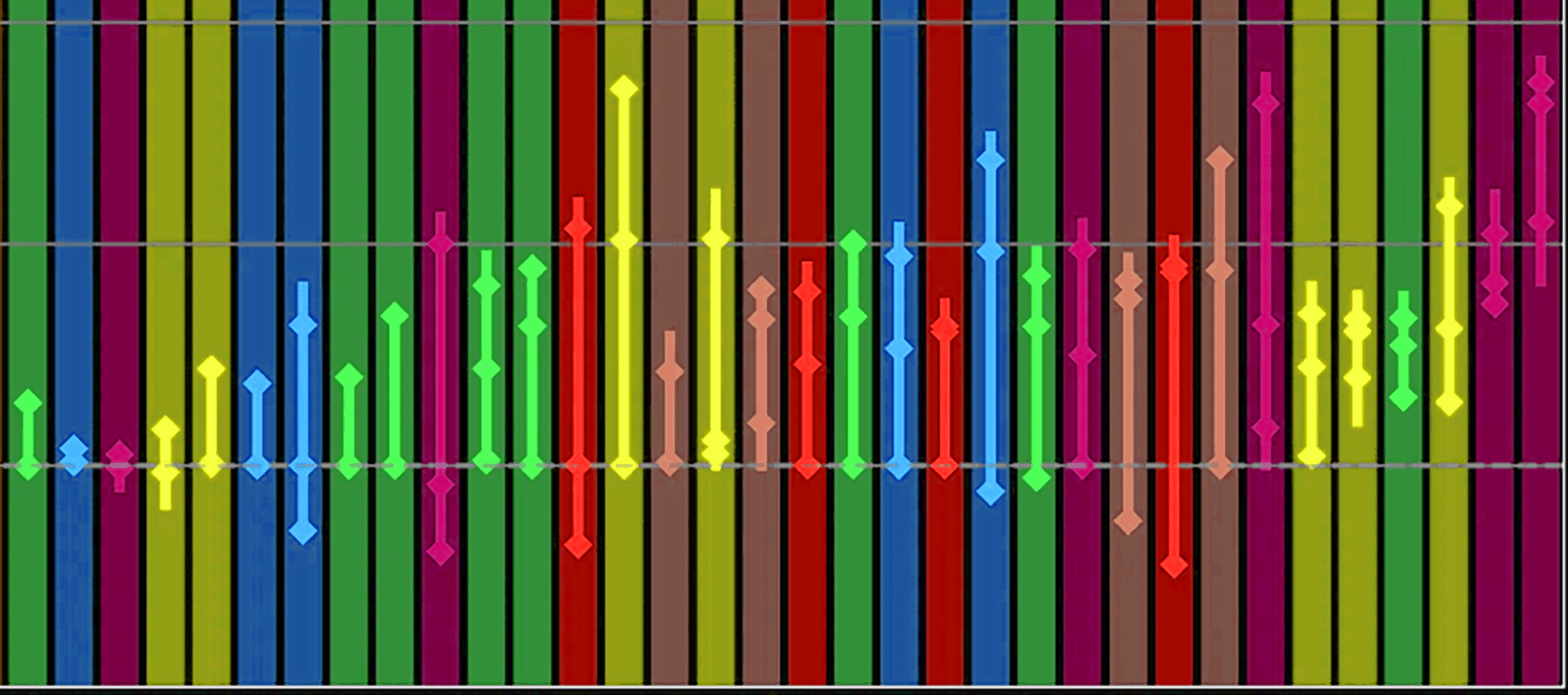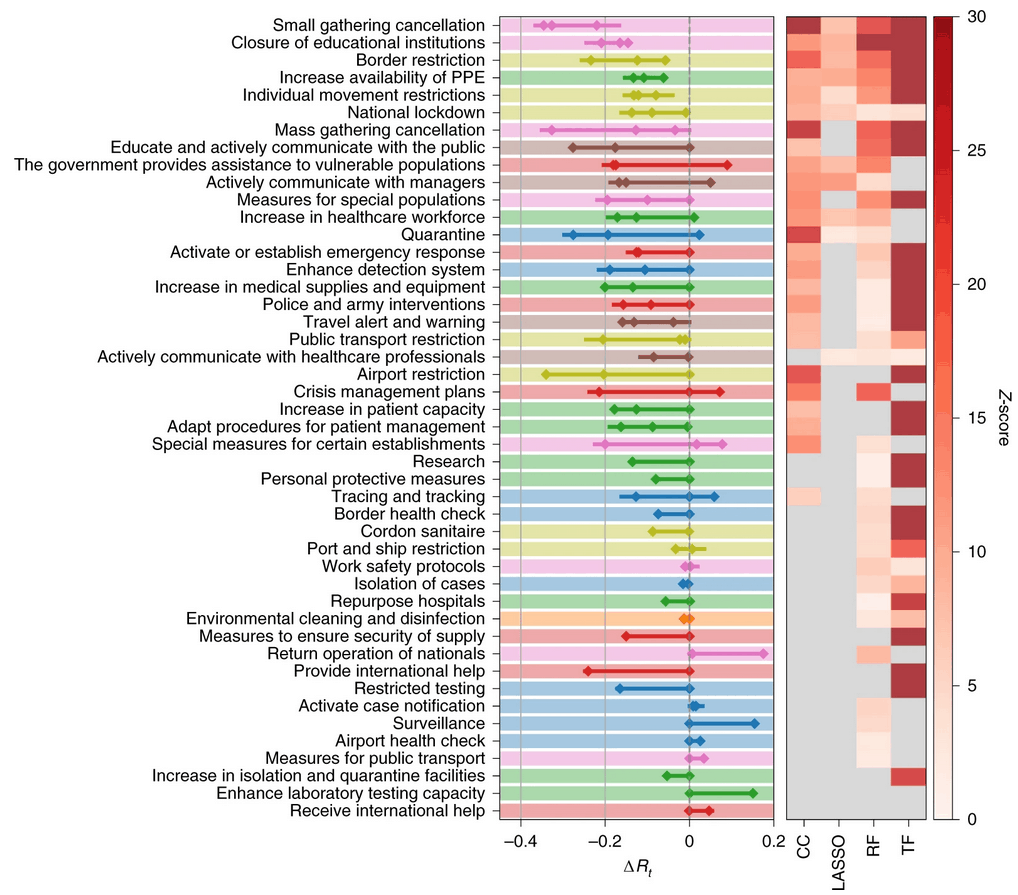THE WHOLE WORLD IS KEEN TO KNOW WHAT MEASURES WORK BEST AGAINST THE SPREAD OF COVID-19.
HERE IS THE FINAL RANKING
With our preprint on non-pharmaceutical interventions (NPIs) against COVID-19 we garnered a lot of attention this summer. On November 16, the peer-reviewed article was finally published in the prestigious journal “Nature Human Behaviour.”
The final publication analyses—with four different approaches—an even larger sample of interventions than the summer version. For the preprint, our collection of measures—the Complexity Science Hub COVID-19 Control Strategies List (CCCCSL)—contained 4,600 individual measures in 76 territories worldwide. The final version made use of 6,068 hierarchically coded interventions implemented in 79 territories, including more than twenty US States, European countries, and Asian regions like Japan and Hong Kong.
In addition, the researchers also validated their findings with two external datasets: the WHO-PHSM dataset https://www.who.int/emergencies/diseases/novel-coronavirus-2019/phsm and the huge CoronaNet project https://www.coronanet-project.org.
OVERALL CONCLUSIONS HAVE NOT CHANGED MUCH FROM THE PREPRINT.
The most effective non-pharmaceutical interventions against COVID-19 continue to be measures of social distancing. Specifically, the cancellation of small gatherings and the closure of educational institutions are at the top of the ranking, followed by border restrictions and the availability of protection gear such as face masks (remember: the collections of measures were collected in the first wave of the pandemic in spring).
CLOSING SCHOOLS
However, says principal investigator Peter Klimek, “no measure can be viewed in isolation.” For example, if children cannot go to school, parents at least of younger children will have to stay at home too. Inevitably, this reduces potentially contagious contacts of the whole household.
“The scientific community still does not know exactly to what extent small children are a factor in spreading the virus,” says Peter. “Yet, what we clearly see in our analyzes is: If educational institutions are closed, the famous R(t)—the number of people a sick person infects on average—goes down by around 0.2.”
0.2? That does not sound like very much…
In fact, as Peter has been stressing unceasingly since the summer, it is never one individual measure that leads to success. It is always a bundle of measures, including such diverse interventions as an increase in healthcare and public health capacities, movement restrictions, travel warnings or a pro-active communication with the public.
This is good news, Peter says: “Although a hard lockdown is very effective, it has huge consequences for the society and therefore should be avoided if possible. How to avoid it? With a clever mix of ‘softer’ measures.” Whereby the correct timing is of utmost importance: The earlier measures are implemented, the more effective they are, Peter and his colleagues found.
COMMUNICATION IS HIGHLY EFFECTIVE
One of the important and well-working interventions is, maybe somewhat unexpected, a comprehensive and well-designed risk communication. “Information really is key,” says Peter. “Politicians and health authorities should reach out to the public with reliable information and recommendations as early as possible.”
As the pandemic continues, the threat of negative scenarios might wear off. In contrast, Peter points out, giving the public insights and reliable information could have long lasting positive effects in the fight against COVID-19, as well as or for possible future pandemics.
If and how well it works, will be part of a future study aiming to analyze the effectiveness of interventions during the second lockdown.



